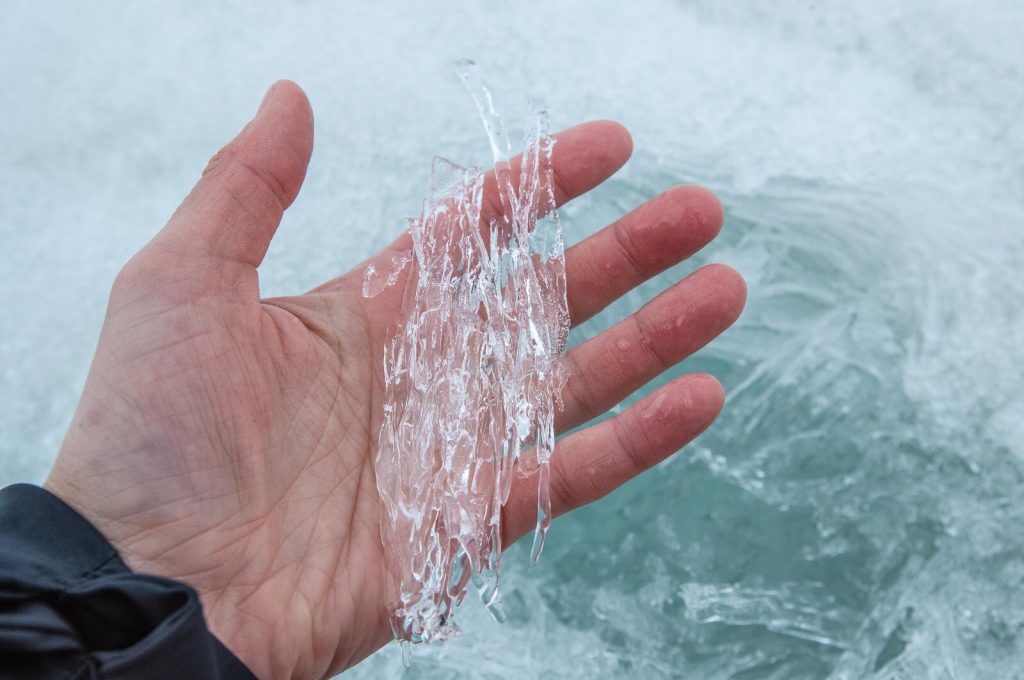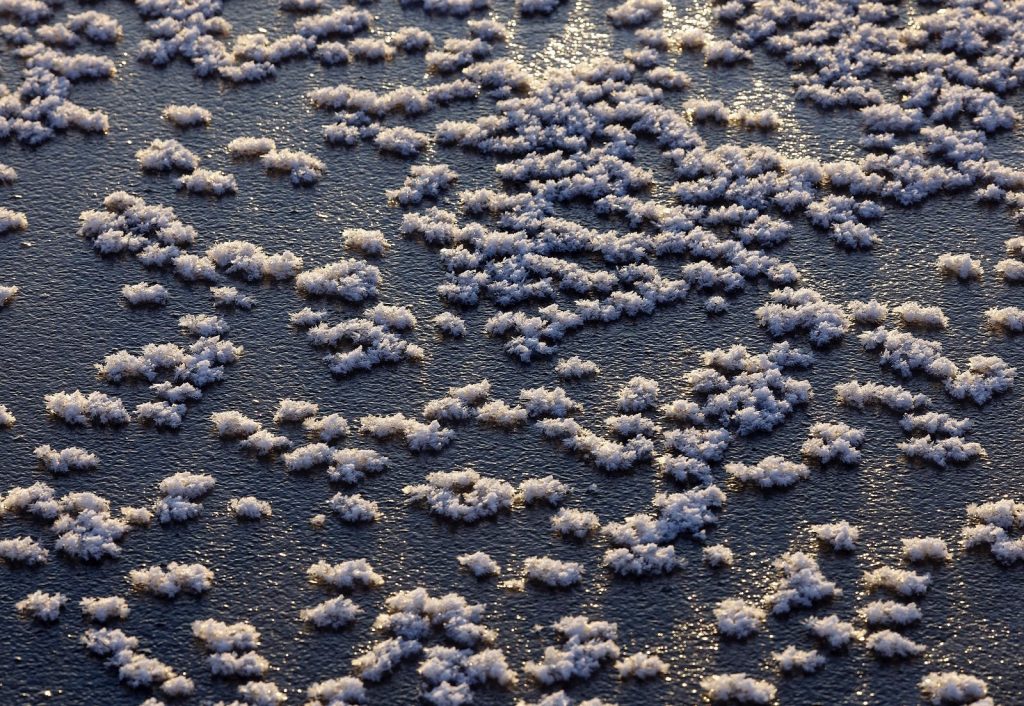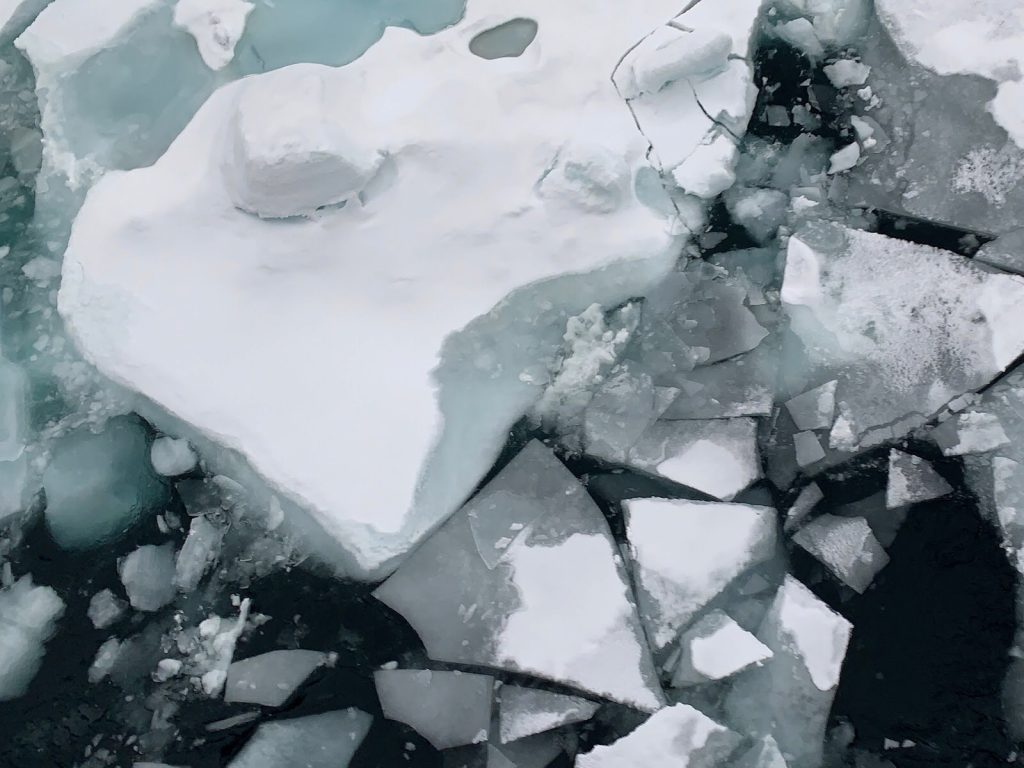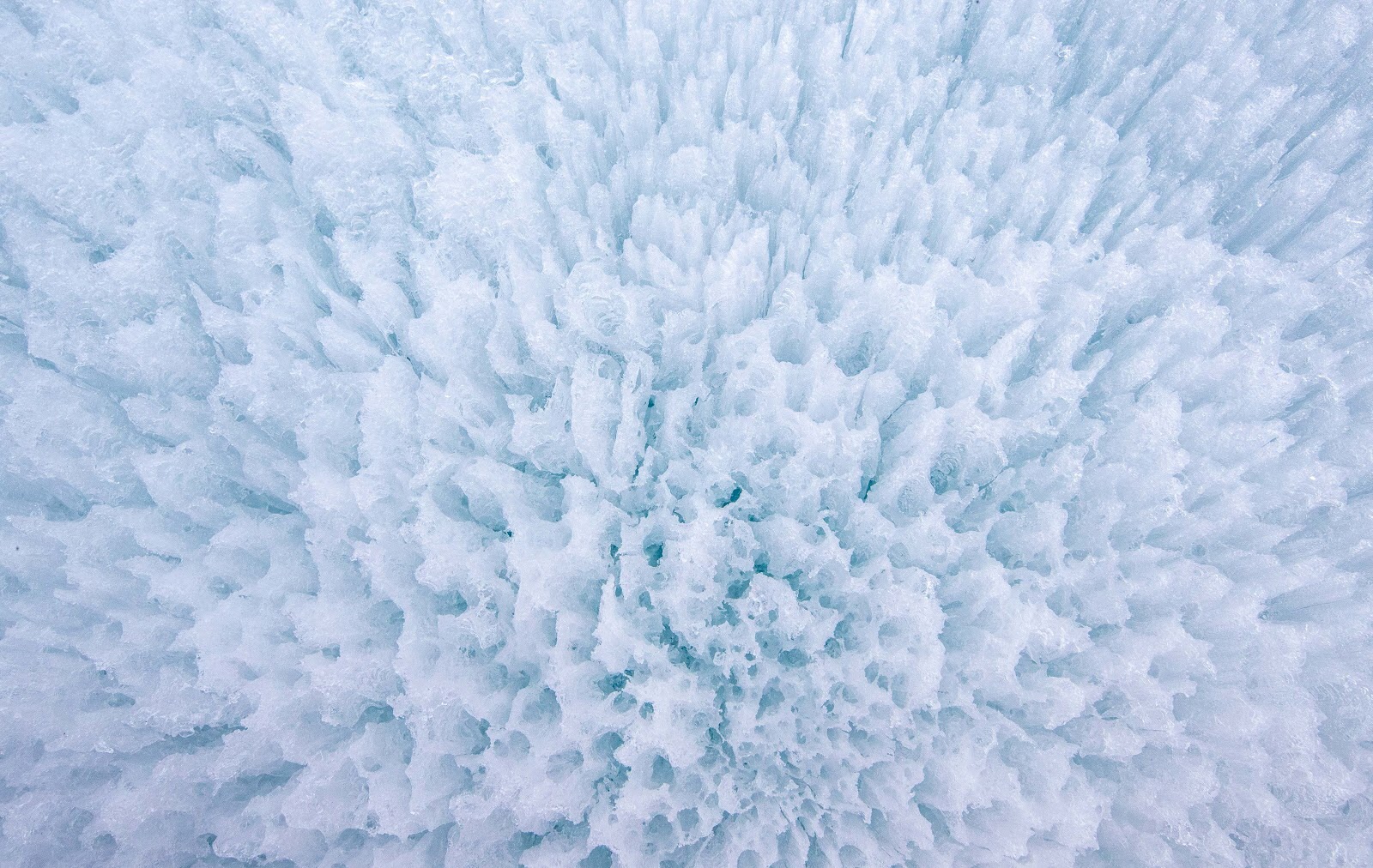by Matthew Shupe, CIRES/NOAA scientist and co-coordinator of MOSAiC
Ice is the main character in this MOSAiC story. It is the reason we are here. Why is the ice declining so quickly? What are the responsible processes? What implications does this have on the rest of the Earth system? This main character reveals its many faces these days. The surface continues to evolve rapidly, and these transformations vary at different locations. Here are some impressions of the many types of ice that I’ve experienced, in my own words and with my own names (Not really scientifically based!):
- Corn: As the snow ages it clumps together into little pebble-sized pieces. These have been all over the floe, often slushy and wet. This is not too different from the spring corn snow that we ski in the Colorado mountains.

- Jewels: There are areas, they seem to be where old blocks of ice are degrading, where the individual ice elements have grown well beyond corn-size, up to what looks like huge, cartoon jewels. About 1-2 cm across, each discrete, and they don’t clump together at all. You can dig your hand into them and it feels like you are digging through piles of large diamonds… I’m rich!
- Shards: These are my favorite. The top manifestation is a clump of pointy ends sticking upward. But when you dig in your hand you find that these points are just the top of shards that stick down into the surface, packed closely together oriented mostly upright. They are also discrete units, like the jewels, but they are elongated columnar shards, about 5 cm long and 1 cm wide. They can be pointy on the ends. They usually come out as a group, which then falls apart. Like the jewels, they clink in your hand when you scoop up a handful.

- Smooth ice: The bottom of many melt ponds, and also in the drainage channels, is smooth and slippery blue ice. I stepped on one of these sloped surfaces the other day and my foot slid out from under me. Down I went to get a wet knee. These surfaces have, in my opinion, the nicest and riches color out here.
- Spikey Forests: In the middle of some areas that used to be ponds and have drained, there are often white spiky formations. They are usually on a little hill and on close inspection they look like a miniature, winter pine forest. Little pointy, shaggy, 2” trees made of ice, sometimes with small valleys and little streams in between clumps of trees.

- Porous: The bottoms of some melt ponds are starting to get quite porous. Brine is removed from ice through brine channels, which eventually grow larger and make the ice holey or “rotten.” Some of the ice is starting to get this way in the middle of ponds. When you step in these areas, everything breaks underfoot and you sink in another 5-10cm. This feels like crusty snow in a way. It is always a bit nerve racking to take these steps because eventually the ponds melt through, such that the brine channels penetrate the full remaining ice thickness and the holes extend all the way to the bottom. Just weak ice connections remain and a heavy footstep in this situation means that you will be taking a swim.
- Melt holes and dimples: Pretty much everything that is not ice but embedded in or on the ice absorbs more solar energy than the ice itself, making it warmer. Rocks, wood, power lines, little bits of rubbish…. Anything that is not ice absorbs extra heat and starts melting its way down into the ice. As you walk across the surface, and especially looking into melt ponds, you find little holes and can look in to find a surprise. Often rocks or pebbles. But even a little fiber of fabric can melt its way in.

- Blocks: As the ice breaks and moves, big blocks can be pushed together. Ridges, when new, are often composed of large blue blocks. But in time these degrade. The blue hard surfaces give way to white soft surfaces. Jagged becomes rounded. And the top layer of the melting blocks becomes soft enough to just scrap off to reveal harder layers below. This area has some fantastic ridges. Sculptures really, of amazing creatures, towers, castles. They are really a site to see… But then they start to erode, becoming softer and shorter. I guess this is kind of like the formation and erosion of mountain ranges, only at a vastly different time and space scale.
The many faces of ice. So fascinating. Today I found myself sitting on the surface, digging through little pockets of this ice and that ice. Exploring their different textures and sounds. And tastes (mostly fresh!). Clearly I have a lot to still learn about this central character of MOSAiC.


